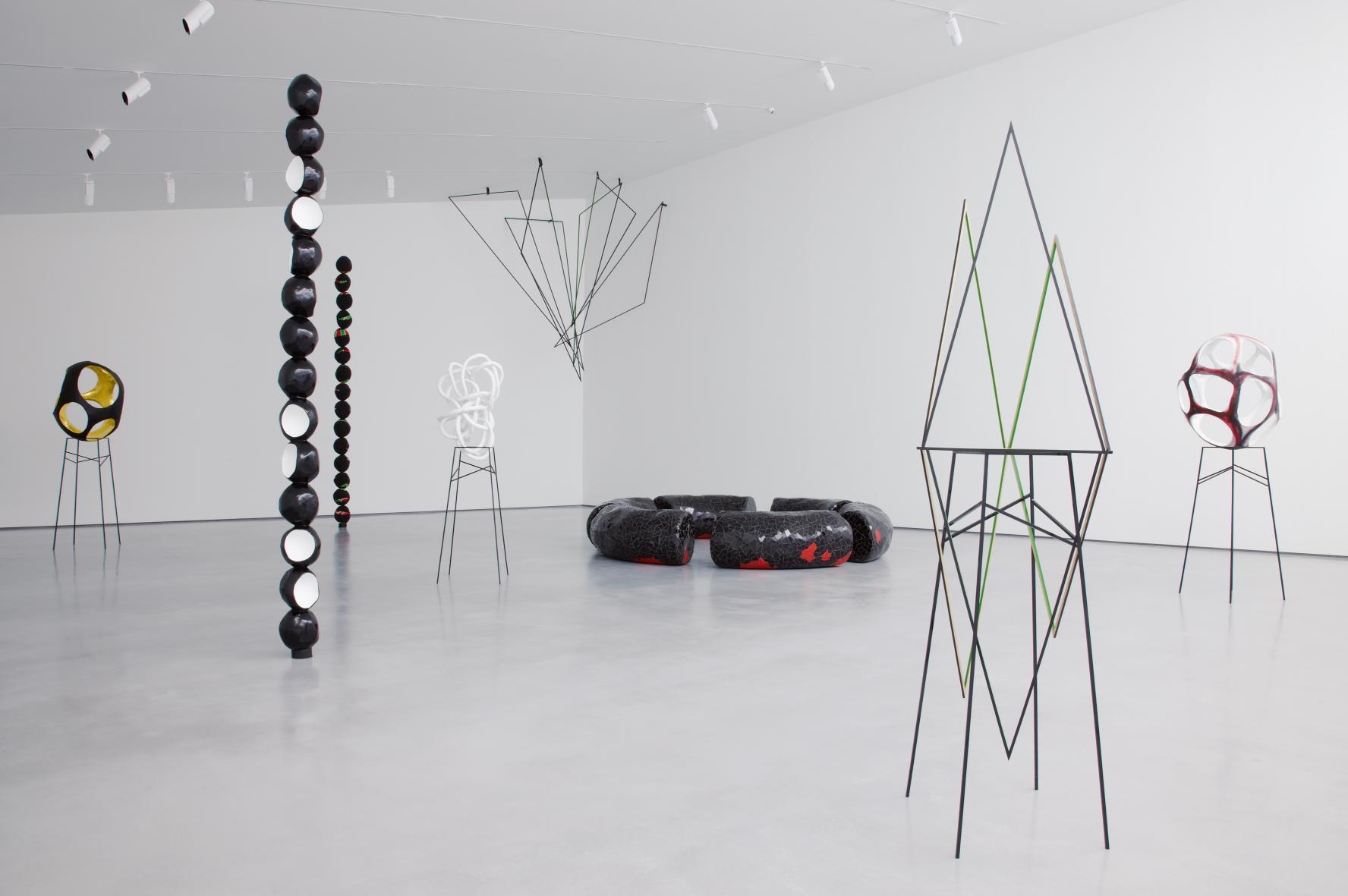Once the surprise – initiated by the cleverly cropped publicity shot reproduced here – that the Hepworth Wakefield, Yorkshire’s new kunsthaus, isn’t situated in some green arcadia but rather on the banks of a fast-running industrial river, near a roundabout, warehouses and car dealerships in this former mining town in the north of England has dissipated, architect David Chipperfield’s design wins one over by stealth. It’s the little things – the sound of your feet on the metal bridge that takes you across the river, the nice squaring of the lamplights around the gallery, the typeface on the building’s facade (made under the direction of graphic studio A Practice for Everyday Life) – that feed into the big, overarching design motifs the architect employs in his multifaceted building. The exterior shell is formed by ten robust-looking interconnected but discretely configured and individually sized trapezoidal blocks, which, on the inside, give curators and exhibiting artists different ceiling heights to play with. Light streams in from skylights running the breadth of the highest point of these sloped ceilings, with additional levels of illumination provided by a variety of windows (these usually showcasing works to the outside world within their frames). It is a building that at once stands out and draws one in, its silver-grey colouring all the while permitting it to sit snugly at home with the prosaic light-industry of its surroundings.
The inaugural temporary exhibition for the gallery goes to the Irish sculptor Eva Rothschild, whose show of mostly new works engages in a dialogue of form with the permanent collection of the institution’s titular inspiration, English modernist sculptor Barbara Hepworth. The juxtaposition of Rothschild’s exhibition, spread over four of the gallery spaces, and the five rooms of curated Hepworth works and associated documentation, performs the feat of making it seem absurd that no one has conceived an exhibition connecting the two artists prior to this. At first glance, Rothschild’s aesthetic of angular, scaled-up Minimalism seems a world away from the organic, weathered appeal of the work by her professional predecessor, yet the coupling illuminates a fluid, adept curatorial conversation between the two generations.
The first room given over to Rothschild contains a new work, Moonface (2011), in which the artist has compiled a totem pole of 14 black-painted boulder forms, each interrupted by a white concavity on one side. The shape plays homage to Hepworth’s Hollow Forms series, one of which, Hollow Form with White (1965), appears in a neighbouring space. Yet while the Hepworth work seems to meditate on material and nature – the elm-wood grain of the exterior contrasting with the smooth white of the interior concavity (the artist would revisit the form, inverting the relationship of surface, with Elegy III, 1966, in which a bronze exterior is juxtaposed with a mottled green interior) – Rothschild’s spheres stretch upwards towards less earthly concerns.
There’s a disconcertingly gothic and mystical (or at least quasi-mystical) atmosphere imbued by the profusion of various black gloss materials in much of the work here. The stalactite-hang of the angular Stairways (2011), for example, has a menacing arachnoid reference to its formally minimalist construction. The geometry of this work can be found again in the floor-based Sweet Valley (2011), whose black triangular frame acts out a drama of occult idolisation while maintaining distinctly modernist lines. This tapping of a witch’s symbolism reappears in Magic Time (2011), a harlequin-printed mannequin hand jutting from the gallery wall, a wooden cube frame balanced at an angle in the palm; as does Sunrise (2011), a large hoop, seemingly floating midair. That work’s title and form again make reference to one of the largest Hepworth works on display, Construction (Crucifixion) (1966–7), in which a large yellow circle and smaller yellow hoop are mounted in partial eclipse of each other over a large architectural freestanding frame. This formal rectangular construction in turn can be found in yet another Rothschild work (the largest by the artist in this show, and one of the few not made especially for it), Natural Beauty (2009). Two metres in height, and twice as much in length, the minimalist architectural construction is broken by a weaving symbiotic attachment of a snakelike scaled black piping, showcasing the artist’s seeming twin concerns of the ethereal and the formal.
The Hepworth is the largest purpose-built art gallery to be constructed in the UK in more than 40 years, and this dual programming – together with ancillary works such as a handsome burnt-timber temporary pavilion by Heather and Ivan Morison, titled The Black Cloud (2009–11), which fits with the sombre feel to both Chipperfield’s exterior design and the palette of work contained therein – is an inaugural tour de force, setting the Hepworth Wakefield apart from the many regional spaces now vying for destination status in the UK.
